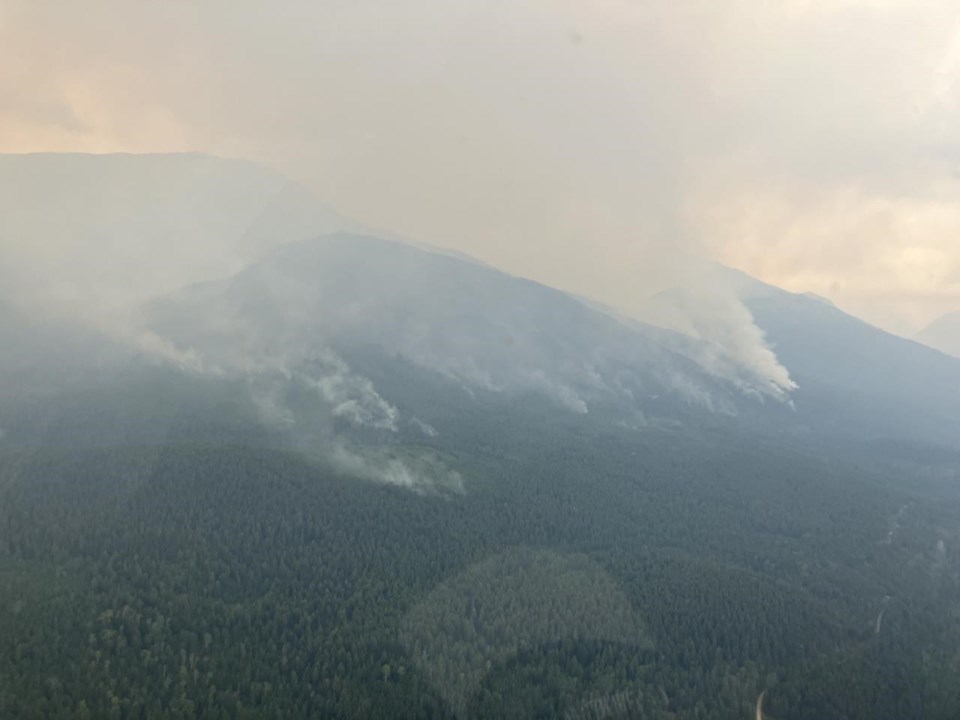The number of active wildfires in British Columbia has dropped sharply to about 400 as cooler weather and recent rain has cut the fire risk, but another hot spell could wipe out those gains as large sections of the province wilt under severe drought.
Provincial fire information officer Mike McCulley said the BC Wildfire Service is grateful for rain in B.C.'s north, saying it has allowed for "a small piece of reprieve."
"It really helps us to get a handle on the fires and make some good progress," he said in an interview Wednesday. "We've adjusted our tactics accordingly to try to take advantage of this window."
The service is reporting just 10 new fires in the last 24 hours amid the easing conditions.
However, McCulley said this will be short lived.
"We will be back into some very intense and dire wildfire conditions and extreme fire behaviour in the southeast part of the province especially, as they received virtually no precipitation through the last few days."
The BC Wildfire Service website shows small pockets of extreme wildfire risk, mainly in the southeast, where 40 of the province's 412 active wildfires were listed as burning late Wednesday. That total is down by about 70 fires since Monday.
Three of B.C.'s 21 wildfires of note, which are blazes that are highly visible or potentially damaging, are located in southeastern B.C., including the suspected lightning-caused fire that broke out Monday west of Invermere.
That blaze has now charred just under 10 square kilometres of mountainous terrain, forcing evacuations and alerts covering a ski resort and more than 1,000 properties. The wildfire service has said winds that fanned the flames Tuesday were expected to ease Wednesday.
Invermere Mayor Al Miller said he was notified of the fire on Monday afternoon, and the news immediately sparked concern for livestock at nearby ranches.
"That was the sort of coming together of the community," he said in an interview Wednesday.
He was impressed by how quickly people co-ordinated the safe removal of the horses from the threatened properties, he added.
There have been no reports of humans or livestock being injured and structures aren't actively being threatened, Miller said, adding that most of the smoke, visible earlier this week, has also cleared.
"I'm quite hopeful," he said. "They (firefighters) really hit it hard and I think it made a real difference because today, although the fire grew and such, it's not as evident here."
Tuesday's strong winds in the southeast also forced evacuation orders for a handful of properties, including the Nipika Mountain Resort, as an almost three-week-old, nearly 11-square-kilometre wildfire flared just east of Invermere.
Structure protection specialists have been assigned to that area while a heavy equipment crew is working to build guards around the properties.
The Ministry of Emergency Management and Climate Readiness said more than 1,000 people are under evacuation order across B.C., while more than 4,000 more have been warned to be ready to leave on very short notice.
Of the 1,493 fires recorded in B.C. since the start of this fire season, the wildfire service says just over 1,000 have been caused by lightning, human activity is linked to 367 others and the cause of 88 is undetermined.
Almost 15,000 square kilometres of trees, bush and grassland has been lost to wildfires since April 1, breaking the record set in 2018.
McCulley said though the statistics are dire it is still early in the season.
"We've got a long way to go," he said. "We are very quickly going to move back into a warming and drying trend, particularly in the south."
Environment Canada is predicting another hot spell is on the way by next week, with highs above 30 for many regions.
Vancouver Island and most of central and northeastern B.C. are ranked at the highest possible drought level, while the Peace River, southeast, Haida Gwaii and inner south coast are just one step lower on the five-level drought scale.
This report by The Canadian Press was first published July 26, 2023.
Brieanna Charlebois, The Canadian Press




